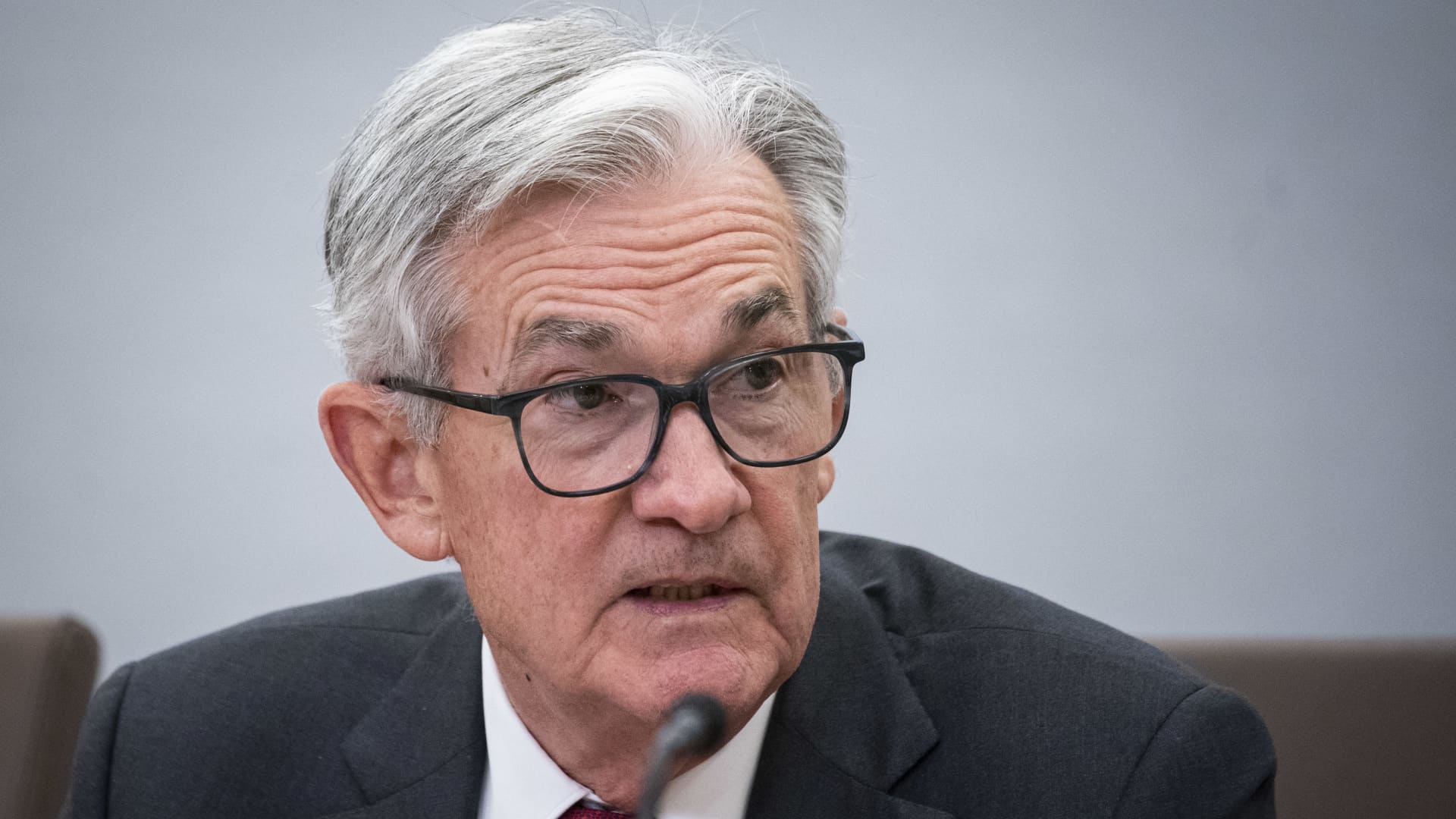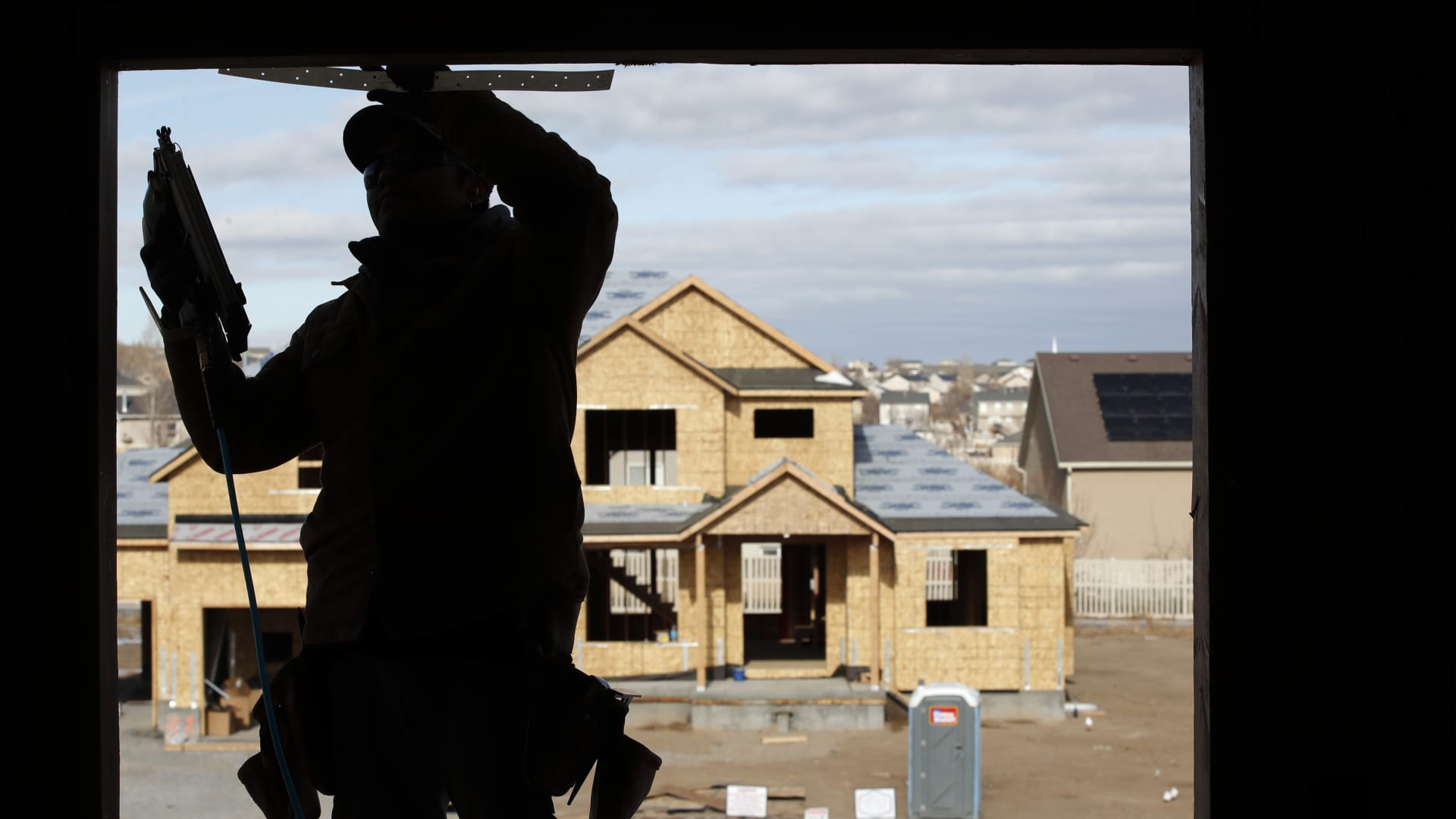US Markets
Tuesday, October 4th, 2022 12:23 pm EDT

Think of Federal Reserve Chairman Jerome Powell as a gymnast sprinting across the mat, spiraling, turning, churning, then twisting through the air and trying to make sure he still lands perfectly on his feet.
That’s monetary policy in this era of rapid inflation, swooning economic growth and heightened fears over what could go wrong. Powell is that gymnast, standing on the economic version of an Olympic mat, and having to make sure everything goes right.
Because if things go wrong, they could go very wrong.
“They have to stick the landing,” said Joseph Brusuelas, U.S. chief economist at RSM.. “It’s the lower end of the economic ladder that is going to bear the burden if the Fed doesn’t stick the landing correctly. They lose jobs and their spending goes down and they have to draw on savings and 401(k)s to make ends meet.”
Consumers pressured by consistently rising prices already are dipping into savings to cover costs.
The personal saving rate was just 3.5% in August, according to the Bureau of Economic Analysis. That was just above a 3% rate in June that was the lowest in 14 years, dating back to the early days of the financial crisis.
Prices for everyday items have been surging at an extraordinary clip. Eggs were up 40% from a year ago in August, butter and margarine soared nearly 30% and gasoline, even with a 10.6% decline in the month, was still more than 25% higher than the same point in 2021.
The consequences for not bringing that under control could be severe, just as they could be if the Fed goes too far in its quest to regain price stability for the U.S. economy.
Brusuelas said a worst-case scenario would look something like a 5.5% unemployment rate and 3.5 million jobs lost as companies have to lay off workers to deal with the economic deceleration and surging costs that would come should inflation run rampant.
The risk of failure
As it stands, the economy is quite likely headed for a recession anyway. The question is how much worse it can end up.
“It’s not a matter of are we going into recession or not, it’s when we’re going to have it and the degree of intensity of the recession,” Brusuelas said. “My sense is we’re in a recession by the second quarter of 2023.”
The Fed cannot just keep raising rates as the economy weakens. It must hike until it reaches an equilibrium where it slows down the economy enough to correct the multifaceted supply/demand mismatches but not so much that it causes deeper, unnecessary pain. According to the Fed’s most recent outlook, policymakers expect to keep going into 2023, with benchmark rates about 1.5 percentage points from the current level.
“If the Fed overdoes it, you’ll have a much deeper recession with higher unemployment,” Brusuelas said.
That the Fed goes too far and stifles the economy too much is the principal fear of the central bank’s critics.
They say there are tangible signs that the 3 percentage points of rate hikes so far in 2022 have accomplished their goal, and the Fed now can pause to let inflation recede and the economy recover, albeit slowly.
“The Fed could quit today and inflation’s going to be back to acceptable levels next spring,” said James Paulsen, chief investment strategist at The Leuthold Group. “I really think the war on inflation has been won. We just don’t know it.”
Paulsen looks at things such as falling prices for commodities, used cars and imported goods. He also said prices on technology-related items are declining, while retail inventories are rising.
On the jobs market, he said the balance of payroll growth this year has come from the supply side of the economy that the Fed wants to stimulate, rather than the demand side that fueled the inflation explosion.
“If they want to, they can cause a needless recession,” Paulsen said. “I just don’t know why they want to do that.”
Paulsen is not alone in his criticism. There are spreading calls around Wall Street for the central bank to dial down its policy tightening and watch how the economy progresses from here.
Wells Fargo head of equity strategy Christopher Harvey said the Fed’s messaging, particularly from Chairman Jerome Powell, that it is willing to inflict “some pain” on the economy is being interpreted as the central bank willing to keep going “until something breaks.”
“What is troubling is the apparent downplaying of capital market signals as the Fed trudges toward its 2% inflation target,” Harvey said in a client note. “Therefore, those signals will need to get louder (i.e. even lower equities and wider spreads) before the Fed reacts. This also implies the recession likely will be longer/more severe than current fundamentals and market risk indicate.”
Human costs
No less an authority than the United Nations issued an agency report Monday in which the UN Conference on Trade and Development warned of the ramifications that the rate hikes could have globally.
“The current course of action is hurting vulnerable people everywhere, especially in developing countries. We must change course,” UNCTAD Secretary-General Rebeca Grynspan told a news conference in Geneva, according to a Reuters account.
Yet the data suggest the Fed still has work to do.
The upcoming consumer price index report is expected to show that the cost of living continued to climb in September. The Cleveland Fed’s Nowcast tracker of the items in the broad-based basket of goods and services the Bureau of Labor Statistics uses to compute the CPI is showing another 0.5% gain excluding food and energy, good for a 6.6% year over year pace. Including food and energy, headline CPI is projecting to rise 0.3% and 8.2% respectively.
While critics argue that those kinds of data points are backward-looking, the Fed faces an added optics issue after it downplayed inflation when it first started rising significantly more than a year ago, and was late to act.
That puts the burden back on policymakers to keep tightening to avoid a scenario like the 1970s and early ’80s, when then-Chairman Paul Volcker had to drag the economy into a tough recession to stop inflation once and for all.
“This is not the ’70s by any stretch of the imagination, for a whole lot of reasons,” said Steve Blitz, chief economist at TS Lombard. “But I would argue that they’re still being overly optimistic at which the inflation rate is going to decelerate on its own.”
For their part, Fed officials have stuck to the company line that they are willing to do whatever it takes to halt price surges.
San Francisco Fed President Mary Daly spoke emphatically about the human consequences of inflation, telling an audience Tuesday that she has been hearing about it from her constituents.
“Right now, the pain that I hear, the suffering that people are telling me what they’re going through, is on the inflation side,” she said during a talk at the Council on Foreign Relations. “They’re worried about their day-to-day living.”
Specifically addressing the wage issue, Daly said she one person told her, “I’m running fast and falling behind every single day. I’m working as hard as I can and I’m falling further behind.”
This post has been syndicated from a third-party source. View the original article here.




